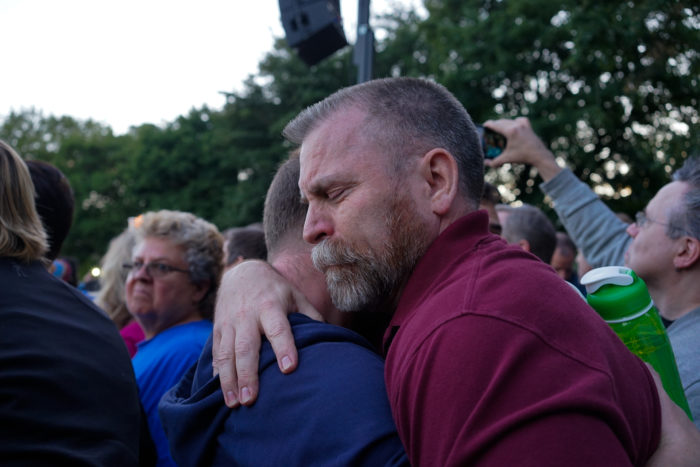
The physical pain of grief is a universally experienced, sometimes overwhelming set of sensations that we don’t talk about enough.
As a Feldenkrais practitioner, I work with my clients to find their way out of all sorts of pain, using a method developed by Israeli physicist Moshé Feldenkrais.
I help them figure out where their pain is coming from, teach them how to reconnect to themselves and pay attention to their bodies so they know when pain is on its way, and give them tools to use to relieve pain if it does show up.
Even though scientists don’t know much yet about why we experience physical pain when we’re grieving, there are things we can do to help it along in its process.
Whether you are grieving after a tragedy like the Pulse shooting, for a family member or something else, here are a few exercises to try.
Grief can of course manifest very differently person to person, but for many it comes in three forms: a sense of physical heaviness, especially in your chest (did you know the phrase “heavy heart” has been around in the English language since at least 1300?), a sense of disconnectedness from the world, and a burning anger that usually doesn’t have a clear outlet.
So what can be done with these giant sensations and the emotions that pair with them?
Whether you are grieving after a tragedy like the Pulse shooting, for a family member or beloved pet, or something else, here are a few exercises to try:
Breathe
Think of the breath you take when you sigh or yawn. It’s a full lung breath, all the way from your diaphragm at the base of your ribcage to the tops of your lungs, all the way up under your first rib, under your collarbones.
Try placing your hands around different parts of your ribcage (front, back, sides, up, down) and breathing into the gentle pressure of your hands — literally help yourself open places in yourself that get closed off by grief.
Go easy though. Breath is a very powerful tool, and if you disrupt its normal pattern too abruptly, it can set off a sense of panic. If at any moment it feels like too much, pause and back off, then come back later.
Stomp
Do it. Sitting, standing, on grass, on a floor, on a sidewalk, do it. The earth can take your anger. It won’t get scared away, no matter how big and fiery your anger is. Stomp so that you can feel your own connection the ground. Feel your bones reverberate with the impact.
If you aren’t in a physical place where you can full out stomp, just a few strong taps with your heels can do a lot of good, too.
Define your space
Bring your hands in front of you. How far do you extend your hands in front until you’ve found what feels like the edge of your space? To the sides? Backwards? Above your head?
In the midst of grief, that boundary could be really close or really far away, and both are okay. Find out for yourself, what kind of boundary is it? Acknowledge it and its importance. Is it the space of your sadness, of your anger, of safety, or of something else? Does it have a hard edge or a soft edge? Does it change if you define it with your hands in a different position?
Cry and laugh
Both are enormously physiologically important for dealing with stress and grief. If you feel like you can’t cry or can’t laugh, be patient with yourself and they’ll show up in their own time.
Also, go find someone to give you a really good, solid hug.
If you’re curious to find out more about the Feldenkrais Method of Somatic Education, you can reach the author at www.rachelhamstra.com, or find a practitioner local to your area at www.feldenkrais.com. A version of this article first appeared on www.rachelhamstra.com.

